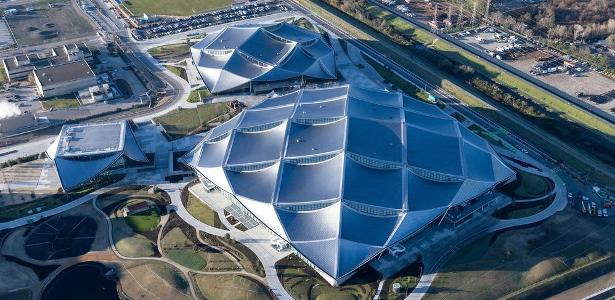.’s new office The Google, in Mountain View, California, features a roof fitted with silver photovoltaic panels resembling dragon scales. The campus opened nearly ten years after its construction was announced, and this solar technology is designed to improve the times when the sun is most visible throughout the day.
According to a report by FastCompany, the panels, combined with local wind power, will make the campus well aligned with Google’s strategy of operating with 100% renewable energy, 24 hours a day by the end of the decade. At this first moment, the space is running on 90% renewable energy.
“We started by really looking at how to solve problems holistically. Typical design processes are optimized to solve isolated problems,” said Asim Taher, head of area strategy and renewable energy for campus development projects at Google.
How do the panels work?
Dragon scale panels are designed to serve a variety of building jobs, not just solar energy.
According to Google, in addition to protecting the space from the weather, they also let in natural light through windows that allow employees to view the landscape from anywhere.
In addition, the shape of the scale still allows you to increase the amount of water that can be captured and stored when it rains on the site. This water is used to irrigate gardens.
Finally, the panel’s curved shape still helps capture sunlight. Parts of it have been installed at different angles, allowing solar energy to be captured at different times throughout the day, such as early morning and late afternoon, when the electric grid tends to have less renewable energy.
More sustainability
The idea of the architects at Bjarke Ingels Group and Heatherwick Studio, who are responsible for the work, was to make the space, which is more than 90,000 square metres, in a space as sustainable as possible.
The new Google office, built on a site facing severe drought, is designed to save water.
In addition, the site contains the largest geothermal system in North America, which allows heating and cooling of the building without fuel fossils. This geothermal system is also responsible for halving carbon emissions at the site.
It is installed underground, and takes advantage of the constant temperature below the surface to pump heat back and forth, working to heat and cool the space. It is estimated that this process will help save about 19 million liters of water that would have to be used in a standard cooling tower throughout the year.

“Incurable thinker. Food aficionado. Subtly charming alcohol scholar. Pop culture advocate.”








More Stories
NASA Releases Selfie of Perseverance Rover Working on Mars
NVIDIA driver includes hidden Final Fantasy XVI profile
PlayStation Plus Extra and Premium saw a significant drop in players in July